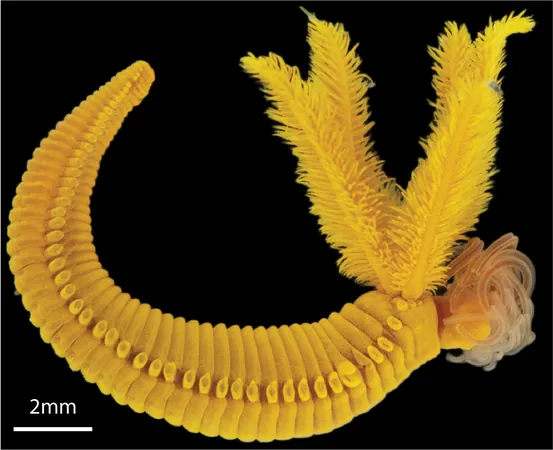
Deep Sea Worm's Toxic Tango: Surviving the Abyss with a Shocking Strategy
2025-08-26
Author: Jacques
A Marvel of Nature's Resilience
Deep in the mysterious depths of the Pacific Ocean, an extraordinary worm named Paralvinella hessleri is defying all odds by thriving in one of the most toxic environments on Earth—hydrothermal vents. This remarkable creature has developed a stunning strategy to combat the deadly arsenic and sulfide levels that surround it.
Turning Toxins into Triumph
Researchers, led by Chaolun Li from the Institute of Oceanology in China, have uncovered a groundbreaking detoxification technique employed by P. hessleri. Instead of succumbing to the poison, this worm creatively transforms the toxic elements into a less harmful form. By accumulating arsenic in its skin cells, the worm reacts it with sulfide from vent fluids to produce orpiment—a yellow mineral much less hazardous than its raw components.
Life on the Edge: A Journey to Discovery
The study published in PLOS Biology reveals not just a survival tactic, but tells a tale of exploration. Dr. Hao Wang, who joined his first deep-sea expedition to observe these stunning creatures, described the sight of the bright yellow worms standing out vividly against the somber backdrop of the ocean floor—a breathtaking moment that showcased nature's resilience.
From Depths to Canvases: The Artful Connection
What adds an intriguing twist to this discovery is orpiment's history; this very mineral was once highly sought after by medieval and Renaissance artists for its vibrant color. A connection exists between biology and art, pulled from the abyss to inspire creativity—a fascinating reminder of how interconnected life can be.
Exploring a New Frontier of Detoxification
Using advanced microscopy and chemical analysis, scientists revealed that these brilliant yellow granules within P. hessleri were indeed orpiment, a finding that took extensive research to pinpoint. This discovery not only enhances our understanding of deep-sea ecosystems but also poses questions about similar detoxification processes in other marine life.
As scientists continue to dive deeper into the ocean's secrets, the story of Paralvinella hessleri stands as a testament to life’s astonishing adaptability, illuminating the path toward new biotechnological applications and inspiring future exploration.









 Brasil (PT)
Brasil (PT)
 Canada (EN)
Canada (EN)
 Chile (ES)
Chile (ES)
 Česko (CS)
Česko (CS)
 대한민국 (KO)
대한민국 (KO)
 España (ES)
España (ES)
 France (FR)
France (FR)
 Hong Kong (EN)
Hong Kong (EN)
 Italia (IT)
Italia (IT)
 日本 (JA)
日本 (JA)
 Magyarország (HU)
Magyarország (HU)
 Norge (NO)
Norge (NO)
 Polska (PL)
Polska (PL)
 Schweiz (DE)
Schweiz (DE)
 Singapore (EN)
Singapore (EN)
 Sverige (SV)
Sverige (SV)
 Suomi (FI)
Suomi (FI)
 Türkiye (TR)
Türkiye (TR)
 الإمارات العربية المتحدة (AR)
الإمارات العربية المتحدة (AR)